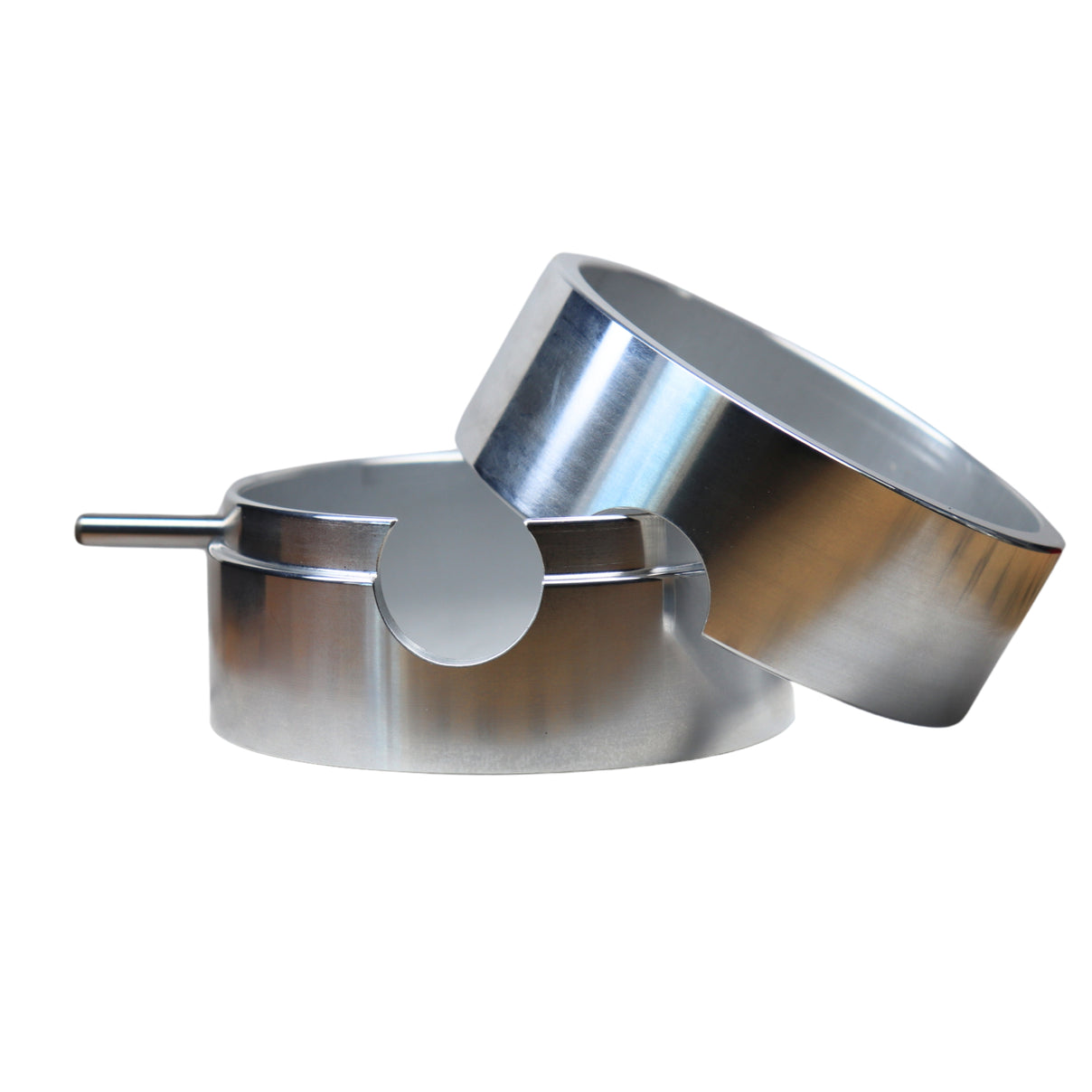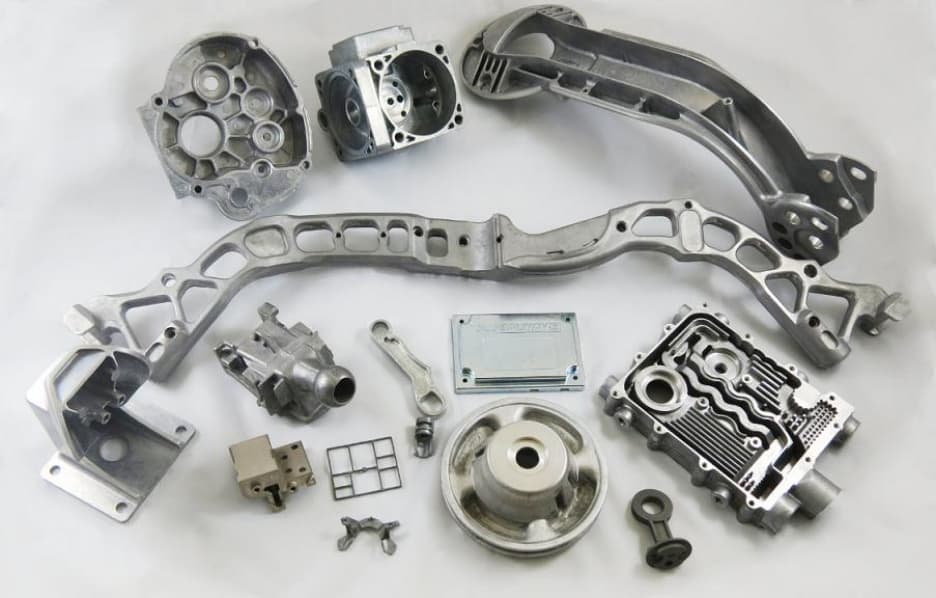Discovering the Essential Applications and Use Aluminum Foundry in Modern Manufacturing
Light weight aluminum shops play a vital function in modern manufacturing, offering diverse markets with their special properties. From auto components that improve fuel efficiency to aerospace structures that focus on weight, light weight aluminum's flexibility appears. Its applications include building and consumer electronics, highlighting its longevity and power efficiency. Nonetheless, the advancements in aluminum spreading techniques and future patterns call for a closer evaluation, as they might redefine its effect on manufacturing.
The Duty of Aluminum Foundries in Automotive Manufacturing
As the automobile sector significantly prioritizes light-weight products to improve gas performance and efficiency, light weight aluminum foundries have come to be vital contributors to manufacturing processes. These shops focus on generating components that fulfill the strict demands of contemporary automobiles, such as engine blocks, transmission real estates, and architectural components. Aluminum's favorable homes-- such as high strength-to-weight proportion, deterioration resistance, and exceptional thermal conductivity-- make it an ideal choice for auto applications.
Moreover, aluminum factories use innovative casting techniques, including die casting and sand spreading, to create complex and durable components. This ability allows manufacturers to maximize layouts for performance while lessening weight. Using light weight aluminum likewise sustains sustainability objectives, as it is extremely recyclable and lowers energy usage in automobiles. By facilitating the assimilation of light weight aluminum right into automotive style, factories play an essential duty in shaping the future of the auto market, advertising efficiency and innovation across the board.
Aerospace Applications: Lightweight Solutions for Trip
Aluminum shops play a substantial duty in the aerospace industry, where the need for light-weight materials is extremely important for boosting gas performance and performance in aircraft. The unique properties of light weight aluminum, including its high strength-to-weight proportion and deterioration resistance, make it a perfect option for different aerospace elements. These components include architectural parts, engine casings, and landing equipment, which add to total airplane efficiency.
Using aluminum alloys, especially those developed through advanced spreading methods, allows for the production of complex styles and complex shapes while lessening weight. In addition, aluminum's recyclability lines up with the aerospace sector's sustainability objectives, reducing ecological influence. With constant innovations in light weight aluminum factory innovations, makers can optimize manufacturing procedures, bring about increased efficiency and reduced costs. As the aerospace sector significantly prioritizes advancements that boost efficiency, light weight aluminum shops will continue to be essential to developing light-weight services for modern flight.
Structure and Building: Enhancing Structural Honesty
In the building and building and construction sector, a significant focus is put on improving structural honesty via making use of aluminum. Known for its high strength-to-weight proportion, aluminum offers longevity without compromising on weight, which is critical in modern-day architectural styles. Its resistance to rust additionally guarantees long life, making it an ideal product for different structural components, including beams, structures, and cladding.
Light weight aluminum likewise assists in cutting-edge design possibilities, enabling designers and engineers to produce visually pleasing frameworks while maintaining safety and security standards. The material's adaptability enables its application in both household and industrial tasks, from high-rise buildings to bridges. In addition, advancements in aluminum foundry techniques have enhanced the accuracy of light weight aluminum parts, ensuring they meet rigid building ordinance. On the whole, the integration of light weight aluminum in building and construction not just enhances structural stability but additionally adds to sustainable building practices, given its recyclability and energy-efficient production methods.
Customer Electronic Devices: The Rise of Light Weight Aluminum in Modern technology
In the domain name of consumer electronic devices, light weight aluminum has actually gotten prominence as a result of its light-weight design advantages and remarkable thermal conductivity. This shift not only boosts item mobility yet also improves device performance by efficiently dissipating warm. As innovation remains to develop, the function of aluminum in creating efficient and sleek gadgets is significantly considerable.
Lightweight Style Benefits
As customer electronic devices advance, the need for lightweight yet durable materials has risen, making light weight aluminum an increasingly prominent option among makers. Its reduced thickness enables the creation of sleek tools that are simple to utilize and bring, substantially boosting mobility. The strength-to-weight proportion of aluminum assurances that products can endure daily wear and tear without endangering efficiency. In addition, the malleability of light weight aluminum allows suppliers to make elaborate forms and types, even more adding to cutting-edge aesthetics and functionality. This light-weight feature also plays a vital duty in power efficiency, as lighter gadgets require less energy to run. Therefore, light weight aluminum not only meets the evolving aesthetic needs yet likewise lines up with the modern focus on sustainability in consumer electronics.
Thermal Conductivity Benefits
Thermal conductivity is a vital element in the efficiency of consumer electronics, and aluminum master this domain. Its high thermal conductivity enables efficient warmth dissipation, which is important for preserving optimum operating temperatures in tools such as mobile phones, laptop computers, and gaming consoles. By facilitating rapid heat move away from sensitive elements, aluminum assists avoid overheating, thereby boosting performance and lengthening tool longevity. The light-weight nature of light weight aluminum complements its thermal residential properties, making it a perfect option for portable technology. As producers increasingly prioritize performance and power efficiency, aluminum's duty in thermal administration becomes also a lot more considerable, leading to its expanding fostering in modern-day digital designs. This pattern highlights aluminum's importance in customer electronic devices development.
Marine Market: Deterioration Resistance in Harsh Settings
Rust resistance is an essential factor in the aquatic industry, where equipment and frameworks are routinely exposed to harsh deep sea atmospheres. Aluminum, especially in its alloy kinds, uses significant advantages in this respect. Its all-natural oxide layer gives a protective barrier that avoids deterioration, making it ideal for vessels, docks, and various other aquatic applications.
Marine-grade light weight aluminum alloys, such as 5083 and 6061, are particularly designed to hold up against the harsh impacts of deep sea and weather. These alloys not just withstand corrosion yet additionally preserve structural integrity and strength with time. Applications vary from hulls and superstructures of ships to parts in offshore systems.
The lightweight nature of aluminum more improves its suitability, allowing enhanced fuel efficiency and ease of handling - Aluminum Casting. As the aquatic sector remains to concentrate on sturdiness and performance, aluminum remains a crucial product choice for resisting deterioration sought after aquatic setups
Innovations in Light Weight Aluminum Spreading Techniques
While conventional aluminum casting methods have offered the industry well, recent innovations are changing the landscape of aluminum manufacturing. Strategies such as 3D printing of mold and mildews and cores are gaining traction, enabling for fast prototyping and decreased lead times. This advancement makes it possible for suppliers to produce complex geometries that were previously tough to achieve with traditional casting techniques. Additionally, improvements in die-casting innovation, including the usage of high-pressure die-casting (HPDC), have enhanced the accuracy and surface area coating of actors light weight aluminum elements, leading to boosted performance in different applications.
Furthermore, the adoption of investment spreading has enabled greater style flexibility and decreased material waste. aluminum metal casting. Advancements in alloy structures are likewise considerable, as they improve mechanical homes and rust resistance. In general, these growths not only streamline production processes yet additionally add to more sustainable practices within the light weight aluminum factory industry, making it versatile to the developing needs of contemporary manufacturing
Future Patterns in Light Weight Aluminum Factory Production
The future of light weight aluminum shop manufacturing is positioned for click this link substantial change via automation, enhancing performance and accuracy in making procedures. Sustainable practices are significantly ending up being a concern, as factories seek to reduce their environmental effect while fulfilling growing regulative needs. Furthermore, developments in alloy development will allow the production of stronger, lighter products tailored for diverse applications, driving development in the industry.
Automation in Foundry Processes

Lasting Production Practices
A growing emphasis on sustainable manufacturing techniques is improving the future of light weight aluminum shop manufacturing. Industry leaders are increasingly adopting energy-efficient modern technologies and reusing efforts to lessen waste and lower carbon footprints. Using recycled light weight aluminum substantially reduces energy consumption compared to primary light weight aluminum production, making it a recommended choice for ecologically aware makers. In addition, innovative casting strategies are being established to boost material effectiveness and decrease emissions. Firms are also investing in renewable resource sources, such as solar and wind, to power their procedures sustainably. aluminum metal casting. By integrating these techniques, the aluminum factory sector not only meets regulative demands however also responds to customer demand for greener items, eventually leading the way for an extra lasting production landscape
Advanced Alloy Development
Innovations in light weight aluminum alloy growth are readied to play a considerable role in the future of shop production, particularly as sustainability and efficiency demands rise. The market is significantly concentrating on developing high-strength, lightweight alloys that can withstand severe conditions while reducing environmental effect. Scientists are exploring cutting-edge structures, such as aluminum-lithium and aluminum-scandium alloys, which promise boosted mechanical homes and lowered weight. Furthermore, the assimilation of advanced manufacturing strategies, including additive production and accuracy casting, permits even more facility geometries and lowered product waste. As regulative pressures and consumer choices change towards greener options, the advancement of recyclable and energy-efficient alloys will certainly be essential. The future landscape of light weight aluminum shop production depends upon these innovations in alloy technology.

Often Asked Questions
What Are the Environmental Impacts of Light Weight Aluminum Shop Workflow?
Light weight aluminum shop procedures can result in substantial environmental impacts, consisting of greenhouse gas discharges, power intake, and waste generation. Additionally, improper management of toxins might cause soil and water contamination, influencing neighborhood ecological communities and communities.
Exactly How Does Aluminum Recycling Affect Shop Processes?
Light weight aluminum recycling boosts factory processes by giving an economical basic material, lowering energy usage and discharges. This lasting method enhances efficiency, reduces waste, and supports the circular economic situation, benefiting both producers and the environment.
What Precaution Are Carried Out in Aluminum Foundries?
Aluminum foundries execute different safety and security actions, consisting of personal protective tools, appropriate air flow systems, regular safety and security training, fire prevention protocols, and tools maintenance treatments to reduce risks and assure a secure workplace for all workers.
How Do Foundries Ensure Top Quality Control in Light Weight Aluminum Spreading?
Factories guarantee quality assurance in aluminum spreading via rigorous product assessments, exact temperature monitoring, standardized treatments, and normal screening of actors items. These steps aid preserve consistency, lower issues, and fulfill market requirements successfully.
What Are the Price Elements in Light Weight Aluminum Foundry Production?
Price elements in light weight aluminum shop manufacturing include resources rates, power usage, labor prices, equipment maintenance, and overhead expenditures. Additionally, production quantity and complexity of styles significantly influence total production expenses and success.
As the vehicle industry significantly focuses on light-weight materials to enhance fuel efficiency and performance, light weight aluminum shops have actually come to be crucial contributors to manufacturing processes. Light weight aluminum factories play a significant go now role in the aerospace field, where the need for light-weight materials is critical for boosting fuel effectiveness and performance in aircraft. Additionally, innovations in aluminum foundry you can try these out methods have actually boosted the precision of light weight aluminum parts, guaranteeing they satisfy rigorous building codes. While traditional aluminum spreading methods have offered the industry well, current technologies are transforming the landscape of light weight aluminum production. The usage of recycled light weight aluminum substantially reduces energy intake compared to key aluminum manufacturing, making it a favored choice for environmentally conscious makers.